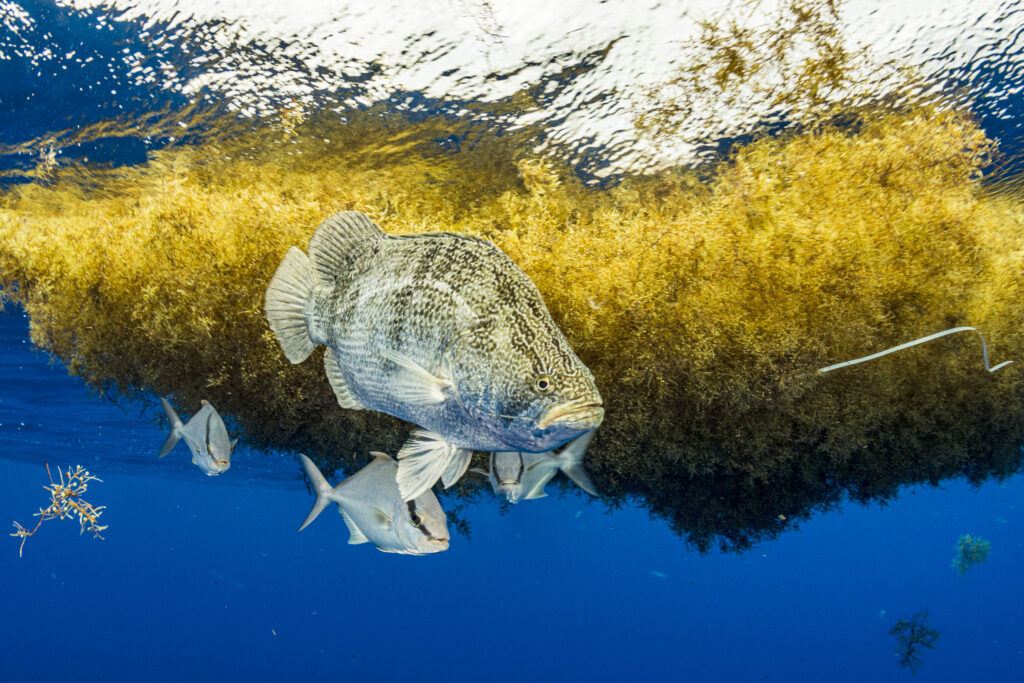
You might not have heard of the Sargasso Sea. But you’ve probably heard of the Bermuda Triangle. Storms from the multiple ocean currents around this part of the North Atlantic have reportedly destroyed hundreds of ships and planes without a trace.
But while the Bermuda Triangle is actually an urban legend, the mysterious patch of ocean called the Sargasso Sea harbours real-life miracles of nature.
Among open ocean waters, in the calm, still eye of the swirling currents, huge mats of golden Sargassum seaweed teem with new life.
Tiny baby green sea turtles nestle in the seaweed, growing stronger from its nutrients, getting ready for life at sea. Iconic seabird species swoop and feed across the vast expanse of open golden sea on their way to Britain. And silvery baby European eels are born in their millions here, to then make a truly epic three-year journey back to UK waters.

The Sargasso Sea, like many unique ocean ecosystems, is under threat. Overfishing and the industrialisation of the oceans from oil drilling and the new threat of deep sea mining mean special places like the Sargasso need our help more than ever.
Thanks to the recently-agreed Global Ocean Treaty, there is a massive opportunity to protect the Sargasso Sea. And this could change everything for oceans the world over.
The choice in the Sargasso Sea is really the choice for all our oceans. And it’s a choice that affects everyone on Earth. The oceans provide food for billions of people and help balance our climate. Every second breath we take comes from the oceans – they’re the biggest producer of oxygen on the planet – even more than the Amazon Rainforest.
Here’s what you need to know about this incredible place – and how you can help protect it.
Where is the Sargasso Sea?
The Sargasso Sea is an area of approximately two million square miles in the North Atlantic Ocean, near the Eastern Coast of the US.
Instead of being defined by a shoreline, it’s surrounded by ocean currents. Included in its shifting boundaries are the islands of Bermuda, a British Overseas Territory.

The Sargassum seaweed that floats in the Sargasso sea is what makes it such a special place – and the birthplace and migration route stop for many iconic species.
Because of its Sargassum, former Chief Scientist of the US National Oceanic and Atmospheric Administration (NOAA) Sylvia Earle called the Sargasso Sea a “golden floating rainforest”. Like rainforests on land, this unique ecosystem supports many iconic species from birth and throughout their lives.
A birthplace and migration route stop for iconic marine life

How the Global Ocean Treaty can help protect the Sargasso Sea
Like many parts of the world’s ocean, the Sargasso Sea faces threats from climate change and plastic pollution.
Greenpeace has mapped out a pathway to protecting at least 30% of our oceans by 2030, in line with the new Global Ocean Treaty.
What is the Global Ocean Treaty and what does it promise?
The Global Ocean Treaty was agreed by world leaders in March 2023. This Treaty is the tool that can create vast protected areas called ocean sanctuaries.
Under the agreed Treaty, these should cover at least 30% of the oceans by 2030 – only six years from now.
Only by countries signing the Global Ocean Treaty into law at a national level will governments be able to create ocean sanctuaries.
Because of its incredible and unique ecosystem, one of the priority areas for a new ocean sanctuary is the Sargasso Sea.
Greenpeace is in the Sargasso Sea doing important scientific work like e-DNA sampling and surveys of seabirds and cetaceans (whales, dolphins and porpoises).
e-DNA sampling studies the traces of genetic material that creatures leave in the water as they swim through, to measure biodiversity in that part of the ocean.
These studies will gather crucial evidence to help make the case that the Sargasso should become one of the world’s first ocean sanctuaries on the high seas.
Making the Sargasso Sea the first ocean sanctuary on the high seas would be an incredible start to putting the Global Ocean Treaty’s promise of protecting 30% of the oceans by 2030 into effect.
Alongside other countries in the region, the UK has a unique role to play, given its links to Bermuda. That’s why we’re calling on the UK government to ratify the Global Ocean Treaty.



